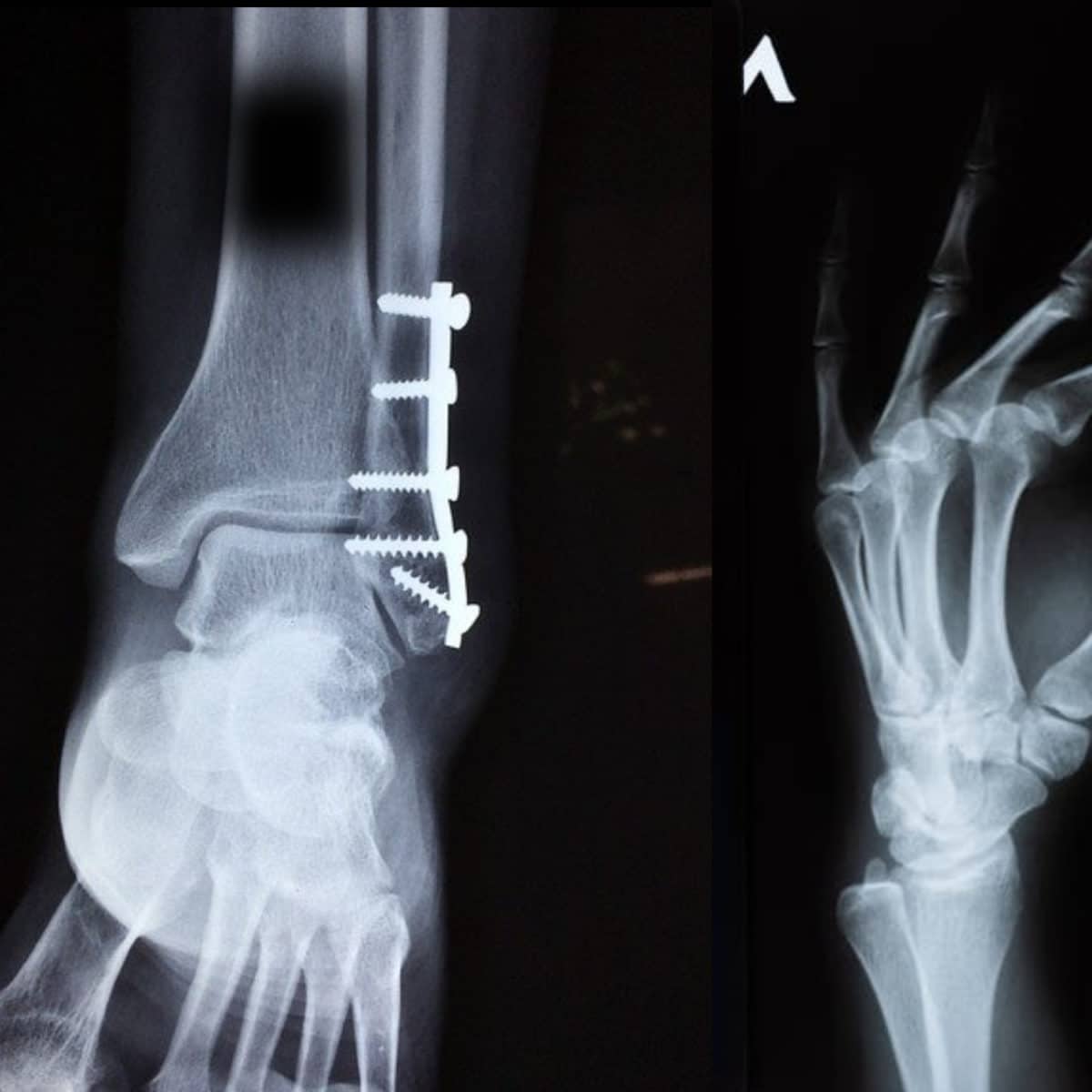Fracture Surgery in Dallas & Frisco
Broken Bone Surgery & Treatment Options
Home » Surgeries We Perform » Fracture Surgery
Why You May Need Surgery for a Fracture
Fractures, or broken bones, are one of the most common problems seen and treated by our orthopedic surgeons. The most common are hip fractures among the elderly, ankle fractures, and fractures of the longer bones in the legs.
Different types of fractures exist, ranging from small, hairline fractures, to open fractures, where the bone sticks out of the skin.
A large number of fractures will heal with immobilization or casting, but some fractures will require surgery. We perform bone fracture surgical repair when a broken bone can’t heal properly with casting or bracing alone.
The most common type of fracture surgery involves internal fixation. This is where the broken pieces of the bone are placed back into the right position using surgical pins, screws, rods, or plates. We most often recommend this for fractures of the ankle, forearm, or leg bones.
What Are the Types of Fractures?
The term, “fracture” simply implies a broken bone. A bone may be fractured completely or partially. This is commonly caused by trauma due to a fall, car accident or sports injuries. For athletes, overuse injuries are a common cause of stress fractures. For older patients, osteoporosis can cause the bones to thing and thus, break more easily.
Types of fractures include:
- Simple Fractures: a fracture in which the broken pieces of bone are well aligned and stable
- Unstable Fractures: a fracture in which the fragments of broken bone are misaligned and displaced
- Open or Compound Fractures: severe fractures in which the broken bone or bones cut through the skin. This type of fracture is more prone to infection and requires immediate attention.
- Greenstick Fractures: a fracture unique to children that involves the bone bending on one side but not breaking

What Fractures Require Surgery?
Our bodies react to a fracture by protecting the injured area with a blood clot and callus or fibrous tissue. Bone cells begin forming on either side of the fracture line, growing towards each other and closing the fracture.
However, many types of fractures exist that ay require surgery in order to properly heal. Some of the most common fracture surgeries include:
Femur Fracture
A broken femur fracture, or thighbone fracture, is fairly common. Internal fixation surgery is usually required to help fix a fractured femur bone. Most of the time, we use a surgical rod to help set and support the femur until it heals. One of our orthopedic surgeons may also need to add a plate to reinforce the rod. You may hear this surgery called open reduction and internal fixation of the femur (ORIF).
Shoulder Fracture
When the ball portion of the upper arm breaks, is crushed or split, our orthopedic surgeons may recommend an arthroscopic shoulder surgery to repair or replace the broken shoulder joint. Shoulder joint replacement surgery may include repair of muscles in the area is they are also damaged at the time of the fracture or injury. If it turns out that you actually tore your rotator cuff, you may need arthroscopic rotator cuff repair.
Hip Fracture
We use three main procedures to repair a hip fracture:
- Hip Repair: This means stabilizing the broken bones with surgical rods, screws, plates or nails. You may hear this called, “hip pinning”.
- Partial Hip Replacement Surgery: This surgery replaces the head of the thigh bone with artificial parts. However, a partial hip replacement does not replace the “socket” portion of the hip joint.
- Total Hip Replacement Surgery: This replaces the entire joint, including the “socket” portion with a prosthesis.
What Are the Types of Fracture Surgery?
Two types of fracture surgeries exist: Open Reduction and Internal Fixation (ORIF) and External Fixation.
Open Reduction and Internal Fixation (ORIF)
This is a surgery in which the fracture site is adequately exposed and the reduction of the fracture is done. This fracture surgery is completed with devices such as Kirschner wires, screws and plates, and intramedullary nails.
External Fixation
This is a surgery in which we stabilize the fracture at a distance from the site of the fracture. External fixation helps to maintain bone length and alignment without the need for casting.
We use external fixation when the following conditions are met:
- Open fractures with soft-tissue involvement
- Fractures with infection
- Burns and soft tissue injuries
- Limb-lengthening procedures
- Pelvic fractures
- Fractures that have bony deficits
- Comminuted and unstable fractures
Fracture Surgery in Frisco and Dallas, Texas
At SPORT Orthopedics, we strive to meet the highest standards of orthopedic science! If you’re suffering pain following an injury, you’ll need one of the top orthopedic surgeons near me. Learn about your options for fracture surgery from the best. Our staff at SPORT Orthopedics takes advantage of cutting-edge therapies, as well as traditional treatments to manage and fix conditions, like fractures. Call us today or fill our our contact form to schedule your appointment.


